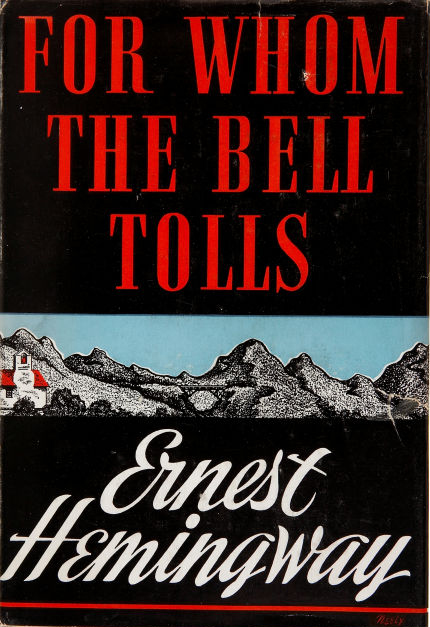The Magician of Malgudi
The colonial invasion of India and the subsequent subjugation of the locals is talked and written about everywhere. But while on one hand, the onset of the English on Indian shores may have spelt doom for the Indians who had to live as a second citizen in their own country, it is also important to remember a gift that the English left behind: their language. While globalization may be an overused term these days, but its seeds were sown long ago by the British East India Company, though the impact and intensity was much less then due to the archaic technology, communication and transportation systems.
So why are we talking about the English and their language here. Well, it’s because the man we are writing about here was one of the holy triad of writers who are considered the fathers of Indian literature in English. They started the trend which gradually led to the mushrooming of some fantastic Indian writers who didn’t write in their mother tongue but preferred to weave magic with their words in the Queen’s English. The man we are gonna talk about is none other than the grand old man of Indian fiction, R.K. Narayanan.
Born as Rasipuram Krishnaswami Narayanaswami in the Madras of old in the autumn of 1906, R.K. Narayanan grew up to be one of the stalwarts of English fiction. The fact his initial education happened in the Christian Missionary schools provided him with an advantage over his peers as he grew up reading the works of some of the best English novelists and poets. He made a modest entry into the realm of literature with a book review of the Development of Maritime Laws of 17th-Century England. But after a couple of years of obscurity, in 1930 he finally he wrote the book which helped him gain immortality and fame: Swami and Friends.
Although initially rejected by a string of publishers, some of whom even laughed at his face when he went knocking at their doorsteps, Swami and Friends went on to become the Bible for generations of children who read and re-read the fun adventures as well as the trials and tribulations of the books protagonist Swami. The fact that it was written in simple English and lacked the prosaic verses of other writers of that time, only increased its popularity further. I myself was introduced to this little masterpiece when I was in my early teens and I have lost count of the number of times I found myself skimming through its pages and frolicking with Swami through the streets of Malgudi.
This brings us to R.K. Narayanan’s greatest invention which was the fictional old town of Malgudi. Like William Faulkner’s Yoknapatawpha County, Malgudi is considered to be one of the greatest inventions of a writer’s imagination. Anyone who has ever got hold of a copy of Narayanan’s book Malgudi Days and has glanced through the map of the town will realize Narayanan’s attention to detail and will be left enthralled by his vivid imagining of something that didn’t actually exist.
After Swami and Friends was published and before the publication of Malgudi Days, Narayanan wrote another two gems of English literature, The Bachelor of Arts and The English Teacher; which together with Swami and Friends formed a trilogy that made Narayanan a force to reckon with. After a string of novels which also included The Dark Room, Narayanan finally decided to try his hands in writing short stories which resulted in a compilation that has become synonymous with R.K. Narayanan i.e. Malgudi Days.
In stark contrast to his earlier novels which were semi-autobiographical in nature, Malgudi Days was almost entirely a work of fiction and established Narayanan as a master of this genre. The fact that even today his name is taken in the same breath as Guy de Maupassant and Anton Chekhov goes on to show his mastery over short stories.
In spite of the success of Malgudi Days, Narayanan didn’t give up on writing novels and in the years that followed, he wrote two novels that are considered to be the crest of Narayanan’s literary genius. The first one was The Financial Expert which is widely regarded as his magnum opus while the second one was The Guide, a novel that helped make a legend out of Dev Anand when he portrayed the role of the protagonist in the 1965 movie by the same name. While you will often come across instances where the screen adaptation was far better than the novel like The Namesake, or the other way round viz. Eragon, hardly has it happened that both the book and the movie based on it turned out to be masterpieces. While The Guide won Narayanan the Sahitya Akademi Award, the cinematic adaptation won all the major Filmfare Awards of that year and is still considered as a classic of Indian cinema.
In almost a century of his earthly existence, Narayanan wrote a great many novels which included, apart from the others mentioned before, The Vendor of Sweets, The Painter of Signs, Talkative Man and many others. He also left behind half a dozen short-story compilations which included amongst others, Lawley Road and Other Stories, An Astrologers Day and Other Stories, The Grandmothers Tale and Selected Stories, and of course Malgudi Days. What set Narayanan apart from his two other famous contemporaries Mulk Raj Anand and Raja Rao was his versatility and his ability to churn put books at the drop of a hat. R.K. Narayanan, along with his highly acclaimed cartoonist brother R.K. Laxman, brought about a revolution in the Indian literary scene, the jolts of which can be felt up to this time. The fact that Narayanan also dabbled in mythology with his works on The Ramayana and The Mahabharata as well as non-fiction with his exemplary books like My Dateless Diary, The Emerald Route and his final book The Writerly Life, goes on to show his versatility and ingenuity.
More than a decade has passed since Narayanan’s demise from this earthly realm at the turn of the new millennium, but his works still keep captivating the readers. It is a pity that the revolution that he started in the domain of Indian literature in English has finally culminated in the recent mushrooming of such pathetic attempts at getting to the top of bestseller lists like Chetan Bhagat’s horrific novels and Rajashree’s chick lit ones which have made a mockery of the Narayanan’s heritage. Needless to say, for millions of bibliophiles and aficionado of Indian literature like me, Narayanan is, and will forever remain the kingpin who started it all. He was the father of English fiction in India and it will be some time before we see another Goliath rise from the ashes and take English writing to a new high.
Image sources:
1. R.K. Nrayanan: http://www.hindu.com/mag/2006/10/08/images/2006100800050101.jpg
2. Malgudi Days: http://theviewspaper.net/wp-content/uploads/malgudi-days.jpg





